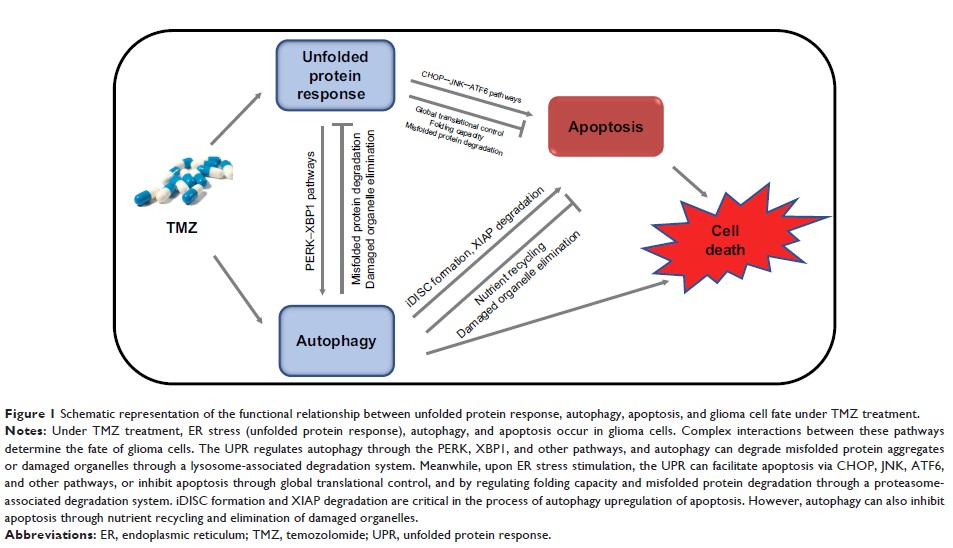108384
论文已发表
注册即可获取德孚的最新动态
IF 收录期刊
- 3.4 Breast Cancer (Dove Med Press)
- 3.2 Clin Epidemiol
- 2.6 Cancer Manag Res
- 2.9 Infect Drug Resist
- 3.7 Clin Interv Aging
- 5.1 Drug Des Dev Ther
- 3.1 Int J Chronic Obstr
- 6.6 Int J Nanomed
- 2.6 Int J Women's Health
- 2.9 Neuropsych Dis Treat
- 2.8 OncoTargets Ther
- 2.0 Patient Prefer Adher
- 2.2 Ther Clin Risk Manag
- 2.5 J Pain Res
- 3.0 Diabet Metab Synd Ob
- 3.2 Psychol Res Behav Ma
- 3.4 Nat Sci Sleep
- 1.8 Pharmgenomics Pers Med
- 2.0 Risk Manag Healthc Policy
- 4.1 J Inflamm Res
- 2.0 Int J Gen Med
- 3.4 J Hepatocell Carcinoma
- 3.0 J Asthma Allergy
- 2.2 Clin Cosmet Investig Dermatol
- 2.4 J Multidiscip Healthc

针对脱靶效应: 内质网应激和自噬作为增强替莫唑胺治疗的有效策略
Authors He Y, Su J, Lan B, Gao Y, Zhao J
Received 15 November 2018
Accepted for publication 1 February 2019
Published 7 March 2019 Volume 2019:12 Pages 1857—1865
DOI https://doi.org/10.2147/OTT.S194770
Checked for plagiarism Yes
Review by Single-blind
Peer reviewers approved by Dr Andrew Yee
Peer reviewer comments 2
Editor who approved publication: Prof. Dr. Geoffrey Pietersz
Abstract: Glioblastoma
multiforme (GBM) is the most common and aggressive adult primary central
nervous system tumor. Unfortunately, GBM is resistant to the classic
chemotherapy drug, temozolomide (TMZ). As well as its classic DNA-targeting
effects, the off-target effects of TMZ can have pro-survival or pro-death roles
and regulate GBM chemoradiation sensitivity. Endoplasmic reticulum (ER) stress
is one of the most common off-target effects. ER stress and its downstream
induction of autophagy, apoptosis, and other events have important roles in
regulating TMZ sensitivity. Autophagy is an evolutionarily conserved cellular
homeostasis mechanism that is closely associated with ER stress-induced
apoptosis. Under ER stress, autophagy cannot only remove misfolded/unfolded
proteins and damaged organelles and degrade and inhibit apoptosis-related
caspase activation to reduce cell damage, but may also promote apoptosis
dependent on ER stress intensity. Although some protein interactions between
autophagy and apoptosis and common upstream signaling pathways have been found,
the underlying regulatory mechanisms are still not fully understood. This
review summarizes the possible mechanisms underlying the current known
off-target roles of ER stress and downstream autophagy in the regulation of
cell fate and evaluates their role in TMZ treatment and their potential as
therapeutic targets.
Keywords: autophagy,
apoptosis, chemotherapy resistance, temozolomide, glioma, endoplasmic reticulum
stress
